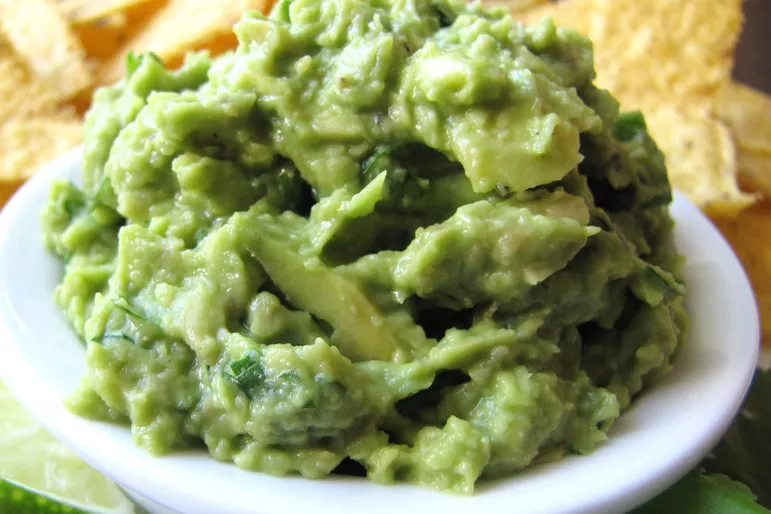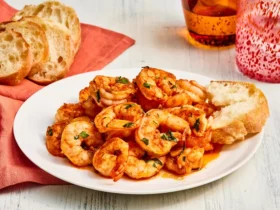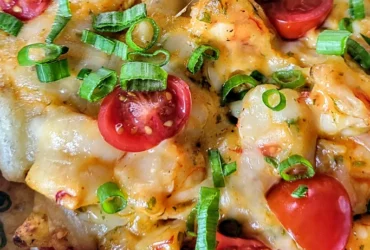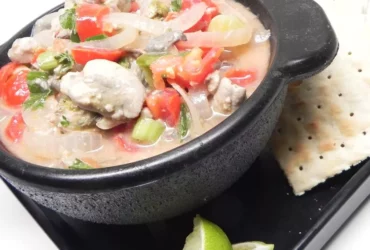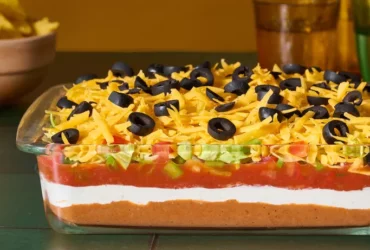Finger Foods
Characteristics
Finger foods are small, bite-sized snacks that are easy to pick up and eat without the need for utensils. They are commonly served at parties, social gatherings, and other informal events where guests may not have time or opportunity to sit down to a formal meal.
Finger foods can be categorized based on their characteristics, such as:
- Size: Finger foods are designed to be small enough to be eaten in one or two bites. This allows guests to try multiple options without feeling overwhelmed.
- Portion control: Each serving of finger food is typically a single unit, making it easy for guests to gauge their consumption and avoid overeating.
- Ease of handling: Finger foods are designed to be easy to pick up and eat, often using minimal or no utensils.
- Convenience: Finger foods are often easy to prepare and transport, making them ideal for events where food needs to be served quickly.
Finger foods can also be categorized based on their composition, such as:
- Savory finger foods: These include items like mini quiches, deviled eggs, and meatballs.
- Sweet finger foods: These include items like fruit kebabs, cheese cubes, and mini pastries.
Finger foods can be served in a variety of formats, including:
- Cold platters: Finger foods that are served chilled, such as dips with vegetables or crackers.
- Hot platters: Finger foods that are served hot, such as mini sandwiches or sliders.
- Finger food bars: Set-ups where guests can create their own finger food combinations, often with a variety of toppings and sauces.
In summary, finger foods are an integral part of any social gathering, offering a convenient and enjoyable way to graze throughout the evening. With so many options available, it’s easy to find something for every taste and preference.
Appetizers can be either hot or cold
Finger foods, also known as appetizers or hors d’oeuvres, are small, bite-sized dishes that are designed to be eaten with one’s fingers rather than with a fork and knife. These types of food are commonly served at social gatherings, parties, and other informal events.
One of the key characteristics of finger foods is their size: they are typically small enough to be picked up and eaten in one or two bites. This makes them ideal for eating while standing or mingling with others, rather than sitting down to a formal meal.
Finger foods can be either hot or cold, and can range from simple snacks like nuts or crackers to more elaborate dishes such as mini quiches or deviled eggs.
Some examples of popular finger foods include:
- Vegetables with dips: carrot sticks, cherry tomatoes, cucumber slices, etc., served with hummus, ranch dressing, or other tasty dips
- Meat and cheese plates: small pieces of meat (such as ham, turkey, or roast beef) paired with crackers or bread, and accompanied by cubes of cheese
- Fruit skewers: fresh fruit such as grapes, strawberries, or pineapple chunks, threaded onto skewers for a light and refreshing snack
- Mini sandwiches: small versions of traditional sandwiches, cut into quarters or halves to make them bite-sized
- Pretzel bites: small pieces of dough shaped like pretzels, baked until crispy and often served with mustard or cheese sauce
- Dips and chips: bowls of spicy or savory dips (such as salsa, guacamole, or spinach and artichoke dip) served with tortilla chips or pita bread for dipping
- Mini pizzas: small pizzas made with mini crusts or English muffins, topped with sauce, cheese, and various toppings
- And many other types of finger foods that are perfect for snacking and socializing!
They are bitesized and easy to eat
Finger foods are a type of food that is designed to be eaten directly from the fingers, without the need for utensils.
They are typically small in size, making them easy to pick up and consume in one or two bites.
Finger foods can range from simple snacks like chips or crackers, to more substantial items like mini sandwiches or skewers of meat.
Some popular examples of finger foods include:
- Cocktail meats such as beef or pork satay
- Veggie sticks with dip
- Mini quiches or savory tartlets
- Bite-sized sandwiches, wraps, or sliders
- Fruit kebabs or fruit skewers
- Sausage rolls or mini sausage bites
- Mini pizzas or breadsticks
- Hors d’oeuvres such as cheese and crackers or deviled eggs
Finger foods are often served at social gatherings, parties, and special events, where they can be easily passed around and enjoyed by guests.
The benefits of finger foods include:
- Convenience: They are easy to eat while standing or walking
- Portion control: Each item is a predetermined size, making it difficult to overeat
- Variety: Finger foods can be made in a wide range of flavors and textures
- Mess-free eating: No need for utensils or plates
- Presentation: They are visually appealing and easy to display
Finger foods can also be categorized into different types, such as:
- Raw finger foods (e.g. fruit, cheese, crackers)
- Cooked finger foods (e.g. mini sandwiches, skewers of meat)
- Savory finger foods (e.g. sausage rolls, hors d’oeuvres)
- Dessert finger foods (e.g. bite-sized cakes, cookies)
Overall, finger foods are a versatile and convenient option for entertaining guests or snacking on the go.
Often served before the main course, but in some cultures served with it
Finger foods are a type of food that can be easily picked up and eaten without the need for utensils, making them perfect for parties, social gatherings, and other informal events.
They are often served before the main course in Western cultures, such as appetizers or hors d’oeuvres, but they can also be a significant part of the meal itself in many other cultures.
In some countries, such as Japan, finger foods like sushi and tempura are not just served as appetizers, but are an integral part of the main course as well.
Similarly, in many street food cultures around the world, like Mexico’s tacos or India’s chaat, finger foods are a staple of everyday eating and are often eaten in conjunction with other dishes as part of a larger meal.
Finger foods can range from simple items like cheese and crackers to more elaborate dishes like mini quiches or deviled eggs.
The key characteristic that defines a finger food is that it can be easily eaten in one or two bites, without the need for utensils or plates.
This makes them perfect for eating while standing up, walking around, or socializing with others, which is why they’re often a hit at parties and other events.
Finger foods are also incredibly versatile, and can be adapted to suit any theme, occasion, or taste preference.
For example, you might serve mini burgers for a casual backyard barbecue, or offer bite-sized samosas for an Indian-inspired gathering.
The possibilities are endless, and the flexibility of finger foods makes them a great choice for entertaining and socializing with others.
In addition to their convenience and versatility, finger foods also offer a range of benefits when it comes to nutrition and flavor.
Many finger foods are high in nutrients and fiber, making them a healthier option than some other snack choices.
And because they’re often designed to be bite-sized and easy to eat, finger foods can be a great way to introduce kids (and adults!) to new flavors and ingredients.
Overall, finger foods are a fun and practical choice for any gathering or occasion, offering a range of flavors, textures, and nutritional benefits that are sure to please even the pickiest of eaters!
Typically smaller than snacks
Finger foods are typically smaller portions of food that are designed to be eaten directly with the fingers, as opposed to using utensils. They are often served as appetizers or snacks at social gatherings, parties, and special events.
The term finger food is thought to have originated in the 1930s in the United States, where it referred to small portions of food that could be eaten while standing or walking around. This was particularly useful during the Great Depression, when people needed convenient and portable options for meals.
Today, finger foods are a staple at parties, weddings, corporate events, and other gatherings. They are often served in a variety of forms, including hors d’oeuvres, canapés, and amuse-bouche.
Hors d’oeuvres are small savory dishes that are typically served before the main meal. They can be anything from mini quiches to deviled eggs, and are often served on toothpicks or small plates.
Canapés are similar to hors d’oeuvres, but tend to be more delicate and bite-sized. They may include items such as tiny sandwiches, meatballs, or cheese cubes.
Amuse-bouche, which translates to “mouth amuser,” is a small dish that is served at the beginning of a meal to awaken the palate. It is often a single bite of something savory and unexpected, such as a tiny piece of foie gras or a spoonful of soup.
Finger foods can be made with a wide variety of ingredients and can range in price from inexpensive to very expensive. Some popular finger food options include:
- Sliders: Small burgers served on small buns
- Pigs in a blanket: Mini hot dogs wrapped in croissant dough
- Tacos: Small tortillas filled with meats, cheese, and vegetables
- Meatballs: Small balls of meat that are often served with marinara sauce
- Cheese cubes: Cubes of cheese that can be served on their own or as part of a fruit and cheese platter
Finger foods offer a convenient and easy way to provide food for large groups of people. They are often less expensive than serving full meals, and can be made in advance to save time during the event.
Can vary greatly in form and composition
Finger foods are small, bite-sized portions of food that can be easily picked up and eaten without the need for utensils. They are often served at parties, social gatherings, and other events where guests are mingling and not sitting down to a formal meal.
The concept of finger foods dates back to ancient civilizations, such as the ancient Greeks and Romans, who would serve small dishes of food at banquets and feasts. Today, finger foods can vary greatly in form and composition, from simple items like cheese and crackers or meatballs, to more elaborate preparations like mini quiches or deviled eggs.
Finger foods are often categorized into several types, including appetizers, snacks, hors d’oeuvres, and tapas. Appetizers are typically served before the main course and are designed to stimulate the appetite. Snacks can be eaten at any time of day and are often lighter fare than finger foods.
Hors d’oeuvres are small items that are passed around a reception or party, while tapas are small plates of food that originated in Spain and are typically served in bars and restaurants. Finger foods can also be sweet or savory, depending on the type of event they are being served at.
Some popular finger foods include mini sandwiches, fruit skewers, cheese and charcuterie boards, meatballs, deviled eggs, stuffed mushrooms, and mini quiches. These items are often easy to make in large quantities and can be customized to fit the theme or occasion of the event they are being served at.
When planning a party or event that will feature finger foods, it’s essential to consider the variety of options you’ll need to offer your guests. You should also think about any dietary restrictions your guests may have, such as vegetarian or gluten-free requirements.
In addition to offering a variety of options, it’s also important to think about presentation and visual appeal when planning finger foods for an event. Guests will be more likely to try items that are visually appealing and well-presented.
Popular Types of Appetizers
Cheese-based and Veggie Options
The world of appetizers and snacks is incredibly diverse, offering a wide range of options to tantalize our taste buds. Among these, cheese-based and veggie options are particularly popular for their versatility and appeal.
When it comes to cheese-based appetizers, there are several types that stand out from the rest. One classic example is Bruschetta, which consists of toasted bread topped with diced tomatoes, garlic, basil, and mozzarella cheese. This Italian staple is a crowd-pleaser, perfect for both hot summer days and cozy gatherings.
Another cheese-based favorite is Spinach and Artichoke Dip, often served with tortilla chips or pita bread. This creamy delight combines the richness of mayonnaise and Parmesan cheese with the earthy flavor of spinach and artichokes. It’s an addictive snack that’s perfect for game day parties or movie nights.
For a lighter take on cheesy appetizers, consider Grilled Cheese Crostini. These bite-sized sandwiches feature melted brie or cheddar cheese paired with sliced meats, fresh herbs, or caramelized onions on toasted baguette slices. This elegant finger food is ideal for wine and cheese parties or upscale gatherings.
Veggie-based appetizers are just as exciting, offering a world of flavors and textures to explore. Roasted Vegetable Skewers are an excellent choice, showcasing a colorful mix of marinated vegetables like cherry tomatoes, bell peppers, and onions, grilled to perfection on skewers. This healthy snack is perfect for outdoor events or picnics.
Mushroom Bruschetta is another popular veggie option, featuring sautéed mushrooms atop toasted bread with garlic, thyme, and grated Parmesan cheese. This savory treat combines earthy mushroom flavors with a hint of herbs, making it a great choice for gatherings or wine tastings.
Caprese Skewers are yet another delightful veggie-based snack, composed of cherry tomatoes, mozzarella balls, and fresh basil leaves, alternated on skewers and dressed with olive oil. This colorful creation celebrates the flavors of Italy’s Amalfi Coast and is ideal for summer barbecues or outdoor festivals.
As you can see, cheese-based and veggie options abound in the world of appetizers and snacks. From creamy dips to fresh salads, there’s something for every taste bud and occasion. Whether you’re hosting a dinner party, attending a food festival, or simply looking for a quick snack, these popular types are sure to impress and satisfy your hunger.
Bruschetta is a classic Italian appetizer consisting of toasted bread, fresh tomatoes, garlic, and basil
In the world of culinary delights, appetizers play a crucial role in setting the tone for a memorable dining experience. Whether you’re hosting a dinner party or simply looking to satisfy your cravings, exploring popular types of appetizers can help you discover new flavors and textures to tantalize your taste buds.
One classic Italian appetizer that never goes out of style is Bruschetta. This simple yet elegant dish consists of toasted bread rubbed with garlic and topped with a mixture of diced fresh tomatoes, basil, and mozzarella cheese. The sweetness of the tomatoes pairs perfectly with the savory flavor of the bread and the creaminess of the mozzarella, making for a delightful combination that’s both refreshing and satisfying.
Another popular appetizer is Spinach and Artichoke Dip. This creamy delight originated in the United States and has since become a staple at many social gatherings. A mixture of spinach, artichoke hearts, garlic, and cream cheese is baked until golden brown and served with crispy tortilla chips or pita bread for dipping.
Falafel is a Middle Eastern appetizer that’s gained immense popularity worldwide due to its crispy exterior and soft interior. Made from ground chickpeas, falafel is typically seasoned with cumin, coriander, and paprika before being deep-fried until golden brown. Served in a pita with tahini sauce, lettuce, tomato, and pickles, falafel makes for a delicious and satisfying snack.
Quesadillas are a Mexican favorite that’s often served as an appetizer or light meal. These crispy tortillas filled with melted cheese (and sometimes other ingredients like chicken, beans, or vegetables) are perfect for snacking on the go or enjoying at a casual gathering.
Lastly, let’s not forget about Spring Rolls – a popular Chinese and Southeast Asian snack that’s made from thinly sliced vegetables wrapped in a thin sheet of dough. These bite-sized treats can be served steamed or deep-fried and are often enjoyed with a sweet chili sauce for dipping.
These are just a few examples of the many delicious types of appetizers available. Whether you’re in the mood for something savory, sweet, or spicy, there’s an endless variety of options to choose from, each offering a unique flavor experience that’s sure to leave your taste buds singing!
Grilled or roasted vegetables like asparagus, bell peppers, and zucchini are commonly used in appetizer recipes
In addition to being a healthy option, grilled or roasted vegetables like asparagus, bell peppers, and zucchini are commonly used in appetizer recipes due to their versatility and flavor.
Another popular type of appetizer is cheese-based dishes such as spinach and artichoke dip, bruschetta with melted mozzarella, and fried mozzarella sticks.
Crispy fried foods like onion rings, jalapeno poppers, and calamari are also favorites among appetizer enthusiasts, often served with a side of tangy dipping sauce.
Mini quiches and savory tartlets are great options for those looking for a bite-sized finger food that can be easily customized with various fillings such as ham, cheese, or vegetables.
Mushrooms, particularly stuffed mushroom caps filled with herbs and cheese, are another popular appetizer choice, offering an earthy flavor and meaty texture.
For those who enjoy seafood, shrimp cocktail, crab cakes, and fried oysters are often served as appetizers, providing a taste of the ocean’s freshness in a small but satisfying portion.
Pita chips or crackers accompanied by hummus or other dips like guacamole or salsa make for an easy and delicious snack or light bite.
Appetizers can also be meat-based, such as mini beef Wellingtons, sliders, or skewers of marinated chicken or beef, all offering a flavorful start to a meal.
Cheesebased options such as spinach and artichoke dip, baked brie, and cheese fondue are also popular
A variety of appetizer options are available to suit different tastes and preferences, and can be categorized based on their ingredients, preparation methods, and presentation styles.
Popular Types of Appetizers
Some popular types of appetizers include:
- Finger Foods: Small, easy-to-grab foods such as mini quiches, deviled eggs, meatballs, and cheese cubes.
- Dips and Spreads: Shared dishes like spinach and artichoke dip, hummus, salsa, guacamole, and French onion dip that are often served with crackers or chips.
- Savory Appetizers: Options such as stuffed mushrooms, mini caprese salads ( Cherry Tomato, Mozzarella, and Basil on toothpicks), prosciutto-wrapped melon slices, and roasted vegetable skewers.
Cheese-Based Appetizers
Cheese-based appetizers are extremely popular and include:
- Spinach and Artichoke Dip: A creamy dip made with spinach, artichokes, cream cheese, Parmesan, and spices that is often served hot with tortilla chips or pita bread.
- Baked Brie: A wheel of Brie cheese baked in the oven until softened, often served with crackers or bread for dipping.
- Cheese Fondue: A Swiss classic where melted cheese is mixed with wine and seasonings, then served in a communal bowl for dipping bread or vegetables.
Veggie-Based Appetizers
Veggie-based appetizers offer a lighter option for those looking for a vegetarian or vegan choice. Some popular options include:
- Fried Cauliflower: Battered and fried cauliflower florets, often served with a side of tangy sauce.
- Grilled Vegetable Skewers: Colorful skewers made from marinated vegetables such as bell peppers, onions, mushrooms, and cherry tomatoes.
In addition to these specific options, other popular appetizer choices include mini sandwiches, spring rolls, edamame, and pickles. The key to creating a memorable appetizer platter is variety, so consider mixing and matching different types and flavors to cater to your guests’ tastes and dietary restrictions.
Health Considerations
Nutrition and Calorie Content
When it comes to appetizers and snacks, health considerations are a crucial aspect to consider. A well-balanced snack can provide essential nutrients while a poorly chosen option can lead to calorie overload.
The nutritional content of appetizers and snacks varies widely depending on the ingredients used. For instance:
- Fried or baked vegetables, such as zucchini or eggplant, are rich in vitamins and fiber but high in calories due to added fats and oils.
- Meat-based options like mini quiches, meatballs, or deviled eggs provide a mix of protein, fat, and sometimes fiber. However, excessive meat consumption may lead to high saturated fat intake.
- Fresh fruits such as fruit kebabs are naturally low in calories, high in vitamins, and rich in dietary fiber, making them an ideal choice for healthy snacking.
The calorie content of appetizers and snacks can contribute significantly to one’s daily intake. For example:
- A serving size of fried cheese bites can range from 50 to 150 calories per piece.
- Some mini quiches or savory tartlets can contain up to 200 calories each, largely due to the addition of heavy cream and butter.
A general guideline for choosing healthier options includes:
- Focusing on whole foods rather than processed products;
- Selecting ingredients that are low in added sugars and saturated fats;
- Opting for baked or steamed preparations over fried ones when possible;
The American Heart Association suggests limiting daily sodium intake to no more than 2,300 milligrams. Many commercial snack options far exceed this threshold. It is crucial to check labels and adjust seasonings accordingly to maintain a healthy balance.
A study by the American Heart Association recommends choosing lowercalorie appetizers
When it comes to health considerations, the American Heart Association suggests choosing lower-calorie appetizer options to help control calorie intake and make healthier food choices.
Here are some key points to consider:
- Select smaller portion sizes of higher-calorie items or share a larger portion with others to reduce overall calorie consumption.
- Pick low-fat or non-dairy appetizers, such as vegetable sticks with hummus or guacamole made from avocados.
- Opt for grilled or baked options instead of fried foods, which are often high in calories and unhealthy fats.
- Avoid appetizers that are deep-fried, breaded, or contain a lot of added sugar.
Sometimes, appetizers can be just as unhealthy as main courses due to their high calorie, fat, and salt content. By choosing wisely, you can enjoy the experience without compromising your health goals.
Here are some lower-calorie appetizer options:
- Fresh vegetable sticks with a side of low-fat or non-dairy dip, such as carrot sticks with hummus (about 50-70 calories per serving).
- Grilled chicken skewers (about 100-150 calories per serving).
- Baked spinach and artichoke dip in a whole wheat pita or served with crudités (about 100-150 calories per serving).
- Fruit salad, such as mixed berries with a sprinkle of sugar-free sweetener (about 50-70 calories per serving).
When ordering appetizers at a restaurant or dining out with others, you can ask for the menu items that are lower in calories and made with healthier ingredients. By doing so, you can enjoy the social aspect of sharing food without compromising your dietary goals.
Ultimately, it’s essential to maintain a balanced diet by making informed choices about what you eat, including appetizers and snacks. Choose options that align with the American Heart Association recommendations for lower-calorie and nutrient-rich foods.
Many commercial appetizers are high in salt, sugar, and unhealthy fats
The key to a healthy lifestyle lies not only in what we eat for our main meals, but also in what we choose as appetizers and snacks. Unfortunately, many commercial appetizers are high in salt, sugar, and unhealthy fats that can have severe consequences on our overall health.
Consuming excessive amounts of salt can lead to high blood pressure, which is a major risk factor for heart disease, stroke, and kidney disease. The American Heart Association recommends that adults limit their sodium intake to less than 2,300 milligrams per day. However, many commercial appetizers contain high levels of sodium, making it challenging for individuals to meet this guideline.
Sugar is another culprit in many commercial appetizers. Consuming excessive amounts of sugar has been linked to an increased risk of developing type 2 diabetes, obesity, and certain types of cancer. The World Health Organization recommends that adults limit their daily sugar intake to less than 25 grams (6 teaspoons). Unfortunately, many commercial appetizers contain high levels of added sugars, making it difficult for individuals to meet this guideline.
Unhealthy fats are also prevalent in many commercial appetizers. Consuming excessive amounts of saturated and trans fats can increase the risk of heart disease and stroke. The American Heart Association recommends that adults limit their intake of saturated fats to less than 5-6% of their daily calorie needs. Many commercial appetizers contain high levels of saturated and trans fats, making it challenging for individuals to meet this guideline.
Additionally, many commercial appetizers are also high in calories, which can contribute to weight gain and obesity if consumed excessively. The National Institutes of Health recommends that adults limit their daily calorie intake based on their individual needs. Many commercial appetizers contain high levels of calories, making it difficult for individuals to meet this guideline.
It is essential to be mindful of the ingredients and nutritional content of commercial appetizers and snacks. By choosing options that are low in salt, sugar, and unhealthy fats, individuals can reduce their risk of chronic diseases and maintain a healthy lifestyle.
Some popular appetizer ingredients like anchovies, bacon, and sausage can be high in sodium and preservatives
- When it comes to health considerations, appetizer ingredients that are high in sodium and preservatives can be a cause for concern.
- Salt and sodium are essential minerals for the human body, but excessive consumption can lead to a range of negative health effects, including high blood pressure, heart disease, and stroke.
- Some popular appetizer ingredients like anchovies, bacon, and sausage are particularly high in sodium due to the curing process used to preserve them.
- Curing involves using salt to draw out moisture from the meat and prevent bacterial growth, but it also increases the sodium content.
- Anchovies, for example, are often preserved in salt or vinegar, which can lead to a sodium content of up to 1 gram per ounce.
- Bacon is typically cured with a combination of salt, sugar, and nitrates, which can increase its sodium content even further.
- Sausages also contain high amounts of preservatives like sodium nitrite and sodium nitrate, which are added to extend their shelf life and enhance flavor.
- While moderation is key when it comes to consuming these ingredients, there are some healthier alternatives that can be used in appetizer recipes.
- Fresh herbs, spices, and citrus juices can add plenty of flavor without adding excessive sodium or preservatives.
- For example, using fresh basil instead of anchovies can add a similar salty-savory flavor to pasta dishes without the high sodium content.
- Similarly, using grilled or roasted vegetables like bell peppers or zucchini can provide a tasty and healthy alternative to bacon or sausage.
- Overall, being mindful of the ingredients used in appetizer recipes is crucial for maintaining a balanced diet and promoting overall health and well-being.
On the other hand, many healthy options such as fresh fruits and vegetables, lean meats, and whole grain crackers can make for nutritious appetizers
When it comes to health considerations, selecting nutritious appetizer options can be a daunting task. However, incorporating whole foods such as fresh fruits and vegetables, lean meats, and whole grain crackers into one’s diet can have numerous benefits.
The key to making healthy appetizers is to focus on nutrient-dense ingredients that provide essential vitamins, minerals, and antioxidants. Some excellent choices include:
- Fresh vegetables such as carrots, bell peppers, cherry tomatoes, and cucumbers
- Fruits like grapes, berries, and sliced apples or pears
- Lean meats including chicken, turkey, fish, and beef
- Whole grain crackers made from quinoa, brown rice, or whole wheat
In addition to these ingredients, there are several preparation methods that can enhance the nutritional value of appetizers. Some examples include:
- Grilling or baking meats and vegetables instead of frying
- Using herbs and spices for flavor instead of salt and sugar
- Limiting the amount of sauce or dressing used in recipes
- Choosing low-sodium options when available
Some specific healthy appetizer ideas include:
- Baked chicken wings with a side of fresh fruit
- Mini caprese salads ( cherry tomatoes, mozzarella cheese, and basil) on whole grain crackers
- Fresh vegetable sticks with hummus or guacamole dip
- Sliced lean meats wrapped around carrot sticks or celery stalks
By incorporating these healthy options into one’s diet, individuals can reap a wide range of benefits including:
- Weight management and improved body composition
- Reduced risk of chronic diseases like heart disease, type 2 diabetes, and certain cancers
- Boosted energy levels and mental clarity
- Improved digestion and reduced symptoms of gastrointestinal disorders
In conclusion, selecting healthy appetizer options can be a simple yet effective way to maintain overall health and well-being. By choosing whole foods and incorporating nutritious ingredients into one’s diet, individuals can enjoy a wide range of benefits that extend far beyond the plate.
- Best Datanyze Alternatives for 2025 - April 24, 2025
- Best Hunter.io Alternatives for 2025 - April 22, 2025
- Best Lead411 Alternatives for 2025 - April 22, 2025

